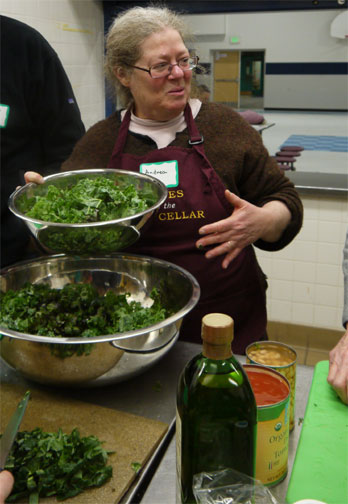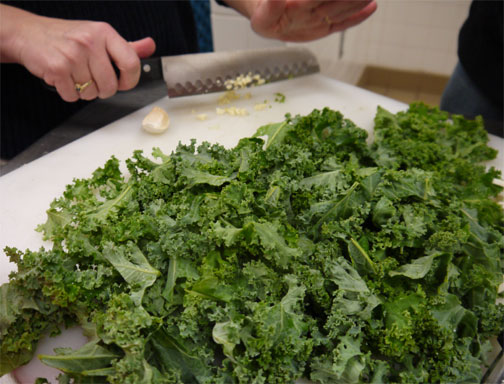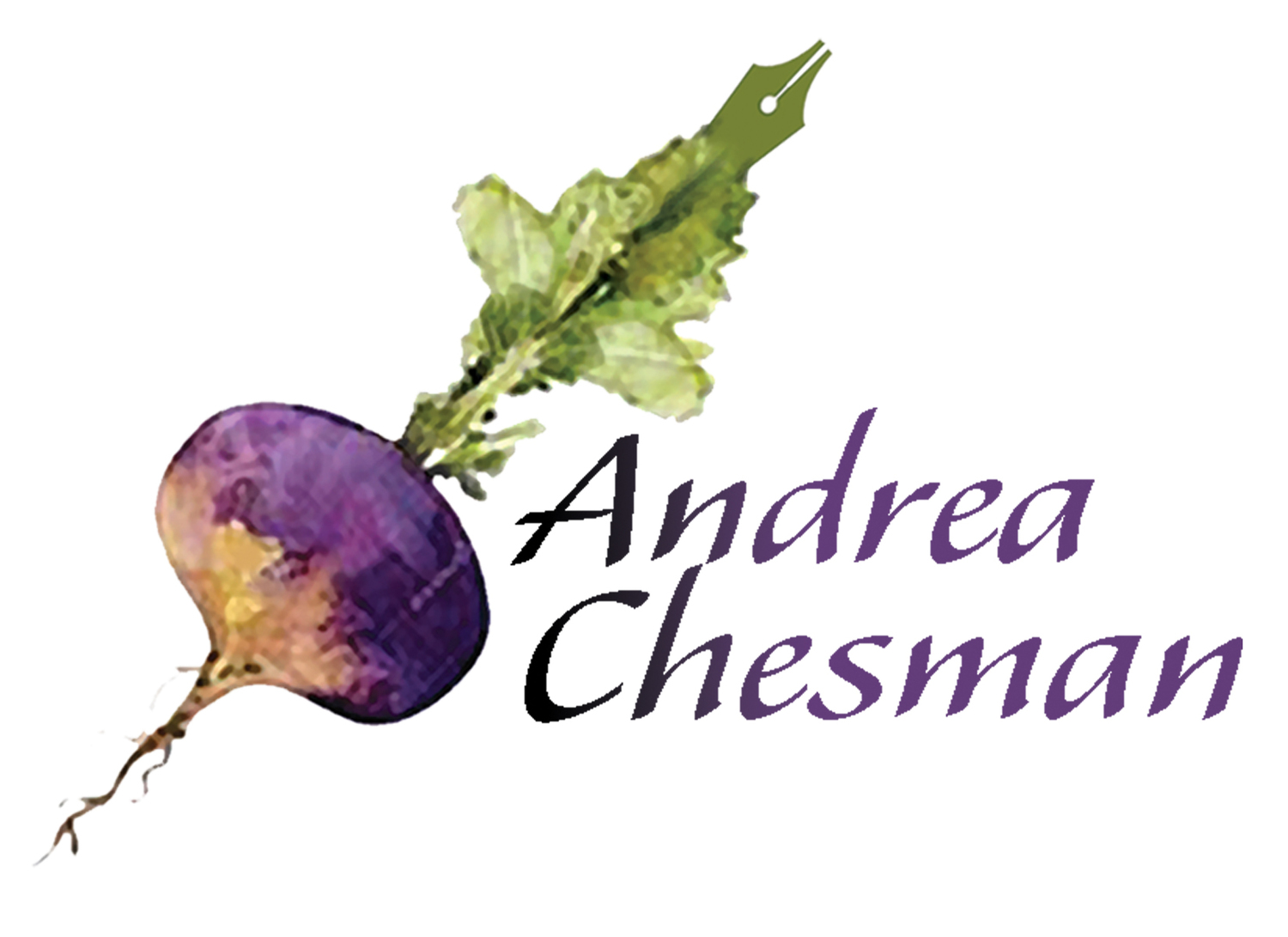Call me Kale Woman. I just love the stuff.
 Kale and me
Kale and me
I love the way it grows tall, allowing the grower to snap off the lower leaves as it continues to grow taller and put out more leaves (just don’t cut off the tip of the plant). I love the way it is hardy up to 10°F in the garden—even under a layer of snow. I love the way it has all these healthful properties (high in vitamins A and D, calcium, and fiber). I love the way it is so versatile in the kitchen, lending itself to steaming, sautéing, and stir-frying. But most of all, I love the way it tastes—so green and just slightly bitter.
So whenever someone approaches me about a cooking class, I suggest a class on cooking with kale. Which is what I found myself doing this past Wednesday for City Market Co-op Burlington, Vermont. The class was held in the kitchen of Sustainability Academy, an elementary school in the Old North End. I’ve taught cooking classes there before—it always feeds my fantasy of becoming a school lunch lady.
The class was titled, Kale Three Ways, and the students were both kale lovers and kale virgins. All were aware that kale is very good for you and available from local growers through much of the winter. And although the class was promised three dishes, we actually prepared four.
 Red kale tastes the same as curly kale or Lacinato kale.
Red kale tastes the same as curly kale or Lacinato kale.
We worked with curly kale, lacinato kale, and red kale—and I assured them there was no difference in flavor or texture once the kale was cooked. First, we started a minestrone soup which featured kale, then we roasted some, then we massaged some kale with a soy vinaigrette until it was tender enough to be enjoyed raw, then I sautéed some with garlic.
 Everything tastes better with garlic--especially kale.
Everything tastes better with garlic--especially kale.
The point of sautéing the kale was to go over a few salient points. First, in my opinion, everything tastes better with garlic (and a little salt). Second, the skillet was preheated with olive oil until it shimmered, which is how we knew it was hot enough. Third, the kale was added in batches; as the first batch wilted, the second batch was added, and so on, until all fit in the pan. Then I sautéed the kale for about 8 minutes, until it was tender.
Finally, I encouraged everyone to drizzle a little extra flavoring onto the finished kale: either balsamic glaze (available in supermarkets), pomegranate molasses (ditto), or a little soy sauce and sesame oil. As I wrote in a March 2012 entry about cooking winter greens, Chinese black vinegar also makes a tasty drizzle.
Here’s the recipe for roasted kale. This is a pretty foolproof recipe, unless you are the type to get easily distracted. If kids are underfoot, and you don’t have a working timer, roast the kale at 250°F for 20 to 25 minutes, instead of roasting at 450°F for 10 minutes. The color of the chips will be brighter and the flavor and texture will be just as wonderful.
Crispy Kale Chips
Serves 1 to 4
Potato chips: be gone! Roasted kale is so delicious, you never need to turn to them again for a hit of crisp and salt. Like potato chips or popcorn, this is more appropriate as a snack or hors d’oeuvre than a side dish because of the high volume of the pieces.
1 bunch curly kale, leaves chopped in 1-inch pieces and tough stems discarded
About 2 tablespoons extra virgin olive oil
Coarse sea salt or kosher salt
1. Preheat the oven to 425°F.
2. Measure the kale and transfer to a large bowl. For every 4 cups of firmly packed leaves, add 1 tablespoon oil. Mix well with your hands to make sure the leaves are evenly coated. Spread out on a large sheet pan into a single layer.
3. Roast for about 10 minutes, until the curly tips of the leaves are darkened and the interior of the leaves are a bright green. The leaves should be mostly crunchy, but not blackened.
4. Toss with salt and serve.
Recipe adapted from Recipes from the Root Cellar. © 2010 Andrea Chesman. All rights reserved.
